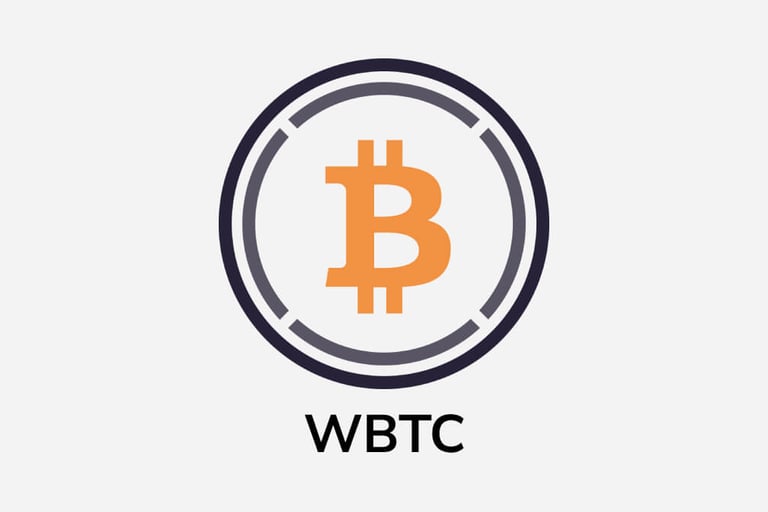Securely Wrap Assets with Chainlink for Cross-Chain Use
Discover how Chainlink can securely wrap assets for use across different blockchains. Learn about the benefits of decentralized cross-chain asset management and how it enhances security and interoperability.
8/17/20254 min read


Chainlink Labs' technology enables seamless cross-chain interoperability, reducing the need for third-party trust in the creation of wrapped synethtic like WBTC. It does so by creating user based contracts through its DON allowing cross chain contracts to be created and synthetic assets to be created in a decentralised and trustless way, reducing the need for third parties like Bitgo which are the largest custodian and producer of WBTC. This reduced trust will reduce the risk factor associated with wrapped assets, allowing them to be better utilised within DEFI
Wrapped BTC is a synthetic asset on the Ethereum blockchain which mirrors the price of Bitcoin. This allows exposure to Bitcoin without actually holding Bitcoin and the ability for the synthetic WBTC token to be utilised within a multitude of DEFI applications which are well established on the Ethereum Blockchain, which the bitcoin blockchain largely lacks but has been in the process of establishing layer two systems for a more native bitcoin DEFI system. While the Ethereum DEFI world is well established, there is a constant need for WBTC tokens, how exactly can these be produced in a more trustless and decentralised way utilising Chainlink's Oracle systems as well as proof of reserves, and how much could WBTC limit its influence to minting third parties for a more trustless WBTC?
The current process of creating WBTC as well as redeeming it to get back the original Bitcoin goes as follows
1 - User Initiates Minting (via a Merchant)
A user sends BTC to a custodian’s (BitGo) Bitcoin address.
The user must first KYC/AML verify with a WBTC Merchant (e.g., centralized exchanges like Coinbase, Binance, or decentralized platforms like Ren Protocol).
2 - Custodian Locks BTC & Signals Minting
The custodian (BitGo) holds the BTC in a multi-sig vault.
Once confirmed, the custodian authorizes the WBTC smart contract on Ethereum to mint new WBTC.
3 - WBTC is Minted on Ethereum
The WBTC ERC-20 token is created and sent to the user’s Ethereum address.
The process is 1:1—1 WBTC = 1 BTC (reserves are auditable on-chain).
4 - WBTC Can Now Be Used in DeFi
Users can supply WBTC to Aave/Compound for lending, trade it on Uniswap, or stake it in yield farms
How WBTC is Redeemed (Unwrapped)
User sends WBTC to the WBTC smart contract (burning it).
The custodian releases the equivalent BTC back to the user’s Bitcoin address.
Bitgo currently plays a large role within the creation of WBTC, and could be a key point of failure which brings an element of risk to the utilisation of synthetic assets within DEFI. This factored in risk reduces the potential flow of WBTC into the DEFI ecosystem, reducing capital efficiency. As a step towards transparency for large custodians and facilitators of synthetic assets such as Bitgo. Because contracts on the target blockchain (Ethereum in this case) do not have direct visibility to the backing chain, they must rely explicitly or implicitly on an oracle to report on deposits of the asset within a smart contract, producing what is sometimes called a proof of reserves. Chainlink is able to do this and provide a proof of reserve for institutions such as Bitgo
Through the use of DONs, Chainlink can take this one step further, placing the contract to create wrapped bitcoin within a user's hands through the use of a cross chain hybrid smart contract. Within such a contract, the user would have total control over the creation of the synthetic asset, as well as the redemption of it without third party trust nor intervention
The process for constructing a hybrid smart contract to wrap Bitcoin and create the synthetic WETH asset through Chainlink services would go as follows
1 - On the Ethereum chain, a contract issues tokens representing BTC
2- The DON controls a BTC address address(1), to wrap BTC, a user sends BTC from their wallet to address(1) along with their Ethereum wallet address
3- The DON monitors address(1) via an adapter to the Bitcoin chain
4 - On observing the user's deposit, a message is sent via the DON to the Ethereum network instructing to mint X amount of assets which will be released onto the user's ETH wallet address(2)
The current WBTC model, while functional, relies heavily on centralized custodians like BitGo—introducing counterparty risk, inefficiencies, and trust assumptions that contradict DeFi’s core ethos. Chainlink’s decentralized oracle networks (DONs) and hybrid smart contracts offer a path forward, enabling users to mint and redeem wrapped Bitcoin in a truly permissionless, trust-minimized way.
By leveraging Chainlink’s cross-chain interoperability and proof-of-reserve capabilities, WBTC can evolve beyond its reliance on third-party intermediaries. Users would gain direct control over their synthetic assets, reducing systemic risks while enhancing capital efficiency across DeFi. This shift wouldn’t just improve WBTC—it would set a precedent for how all cross-chain synthetic assets could operate in a decentralized future.
The technology to achieve this exists today. The question is no longer if wrapped assets can become trustless, but how soon the ecosystem will adopt these solutions. As DeFi matures, projects that prioritize decentralization at every layer—from oracles to minting mechanisms—will lead the next wave of innovation. The era of user-owned, user-controlled WBTC is within reach


Get in Touch
We'd love to hear from you! Reach out for questions, feedback or other enquiries
Reach
info@bitesizedblockchain.com
Bite Sized is not affiliated with these brands in any way





Grab your daily web 3 byte
